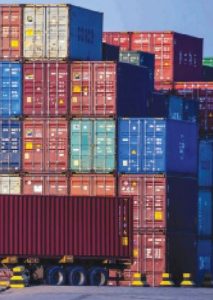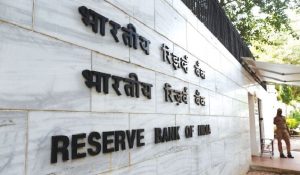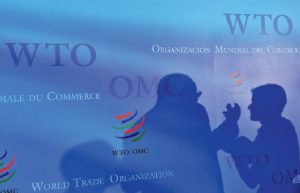 It is going to be an uphill task to save lives and at the same time ensure livelihoods. However, the economic catastrophe inflicted by Covid-19 is being touted in some quarters as a once-in-a-lifetime opportunity for India to attract business, industry and investment from the world over.
It is going to be an uphill task to save lives and at the same time ensure livelihoods. However, the economic catastrophe inflicted by Covid-19 is being touted in some quarters as a once-in-a-lifetime opportunity for India to attract business, industry and investment from the world over.
The ASEAN-India Centre (AIC), Research and Information System for Developing Countries and Engineering Export Promotion Council of India in a comprehensive report “Covid-19 Challenges for the Indian Economy, Trade and Foreign Policy Effects”, points out the world is facing humanity’s biggest crisis since World War II.
Inputs from India’s leading economists, professors, trade policy and trade operations experts highlight the macro and micro economic challenges before India and the way forward. Dr Mohan Kumar Chairman, RIS says, “almost every country has been affected by the devastating Coronavirus disease (Covid-19).
Undoubtedly, the Coronavirus has put the world economy at a major risk”. According to the World Trade Organization, the world trade is expected to fall by between 13 per cent and 32 per cent in 2020, thereby indicating the world economy is expected to face big recession. Although India has managed well till date in containing the spread of the virus, the Covid-19 pandemic has already disrupted normal economic activity and life in our country. India’s trade has been severely impacted. People have a sudden loss of their income, causing a major drop in demand.
Ravi Sehgal Chairman, EEPC India says, “The pandemic caused by Covid-19 has created a shock and awe among us all, putting two third of the global population under lockdown. Insaan, Gyaan & Vigyaan (Humanity, Knowledge & Science) stand challenged; posing socio-economic and political risks for the whole world. The world wide spread of the pandemic resulted unfathomable economic fallouts; zero economic activity, disruption of supply chains networks, falling global demands, supply gluts leading to price fall, loss of trust and confidence and fear of gloomy future. Pandemic comes at a worst of time when global economic order is already exposed to rising trade protectionism, ongoing tariff wars, unilateral economic sanctions, standstill at WTO talks, waning economic and financial institutions and lack of mutual trust, wisdom and initiation among global leadership”.
Twin challenges and hope
Indeed, there are, primarily, two major challenges that the Indian economy is facing at this juncture. First is to save the country from the spread of Coronavirus (Covid-19), which is a health emergency. Saving lives is the most important, the principal concern of the government. Second is to save the economy from the unfolding economic uncertainty due to the dual effects of the Coronavirus pandemic and the global and national lockdown. In its recent forecast, the World Trade Organization (WTO) indicated a clear fall in world trade between 13 per cent and 32 per cent in 2020, perhaps the highest fall since the Great Depression of the 1930s.
The International Monetary Fund has also slashed growth forecast for the Indian economy, projecting a GDP growth of 1.9 per cent in 2020. In its recent World Economic Outlook, the IMF does project a rebound in the growth of the Indian economy in 2021, at a rate of 7.4 per cent. So, there is hope!
Ripple Effect
Prabir De, Professor at the Research and Information System for Developing Countries (RIS) and Suranjan Gupta, Executive Director Engineering Export Promotion Council opine that the pandemic has the ripple effect as the economic crisis has affected India’s economic and national security. The effects of the crisis on trade and foreign policy are not only complicated but also widespread.
There is a fall in global trade, capital flows and remittances; disruption in supply chains; contraction in outputs; rise in unemployment; and then rise in poverty. Health crisis, if not controlled, may generate further social unrests and complicated health hazards. Several business units may have to shut down and face bankruptcies, and with the fall in business orders, both international and domestic, the value of the currency may deteriorate further.
Professor at the National Institute of Technology (NIT), Silchar, Gurudas Das says, “as the crisis deepens, two important realizations, inter alia, have come to the fore. First, globalization not only unlocks the means for the market, it also adds wings to epidemics that spread in no time across the geographical, political and social borders and boundaries”. Das says that countries and regions, which are outliers or less integrated with the process of globalisation, like most of the countries in Africa, are not yet hit hard. For an example in India, one may cite the North Eastern states of Arunachal Pradesh, Assam, Manipur, Meghalaya, Mizoram, Nagaland and Tripura, which have been least affected so far.
The idea of “gated-globalization” is, gaining currency, which requires creation and development of multiple value chains and alternative supply chains so that if one circuit gets disconnected businesses can fall back on others. Nations could have options to switch gear from one circuit to another as and when needed. Perhaps the architecture of “gated-globalization” will involve re-inventing the state that places community over market. Rise of nationalism and empowered nation states across the world might get energised and while charting their way forward they might learn from pondering over the narratives of isolation of the outliers.
Nilanjan Banik, Professor of Economics at the Bennett University and Anurag Narayan Banerjee, Associate Professor in Financial Econometrics at the Durham Business School, Durham University, Durham say that although social distancing is important, however, lockdown also means millions of livelihoods getting affected, and the possibility of people dying from hunger. For India’s 120 million migrant workers, earning a daily subsistence allowance of less than US$ 5 dollars per day, it is quite natural to return back to their native places when faced with an economic shutdown.
Banik points out that in our country, other epidemics such as cholera, malaria, and tuberculosis have a disproportionately higher number of people getting affected from the low-income group, and yet they never make it to the status of pandemic. For instance, every year 2.69 million people get affected by Tuberculosis includes (HIV+TB), 15 million from Malaria, and 4 million from Cholera.
Even the media attention has been fleeting and not as frenzied as Covid-19. However, no one talks about before lockdown, when every day there has been around 625 fatal road accidents in India. So, 21 days of lockdown has saved 13,125 lives. For the urban informal sector workers and the agricultural labourers who have left for their hometowns, lockdown means loss of job. As their income is hand to mouth, with zero savings, lockdown can be life-threatening. In fact, the inflationary impact of lockdown is going to hit them the most.
Dr. Biswajit Mandal, Associate Professor, Department of Economics & Politics, Visva Bharati University, West Bengal opines that the government must be very careful about the basic health infrastructure of the country. Because it goes without saying that the niggling question coming to the fore is who is going to substitute human capital?
Can we envisage of artificial intelligence or robots to take charge? In such a mechanized society, will a computerized programme be able to handle crisis situations? Is it necessary to be compassionate, sympathetic, and socially acceptable? What would happen to metal health, happiness, social capital etc.?
Dr. Bibek Ray Chaudhuri, Associate Professor, Indian Institute of Foreign Trade (IIFT), Kolkata Campus says, manufacturing activity and international trade was severely impacted due to enhanced tariffs, policy uncertainty and resulting slackening of investments. Only silver lining was a better performance of the services sector.
Problem in this case is that any prediction about the economy or trade crucially depends upon the prediction of the ending of the pandemic. This makes the situation different from a crisis, which is either economic or natural. Here, the recovery cannot happen by one country supporting the other as almost 170 countries have been affected by the virus. The recent monthly trade data for India reveals that the overall exports in January, 2020, compared to January 2019, was down by 1.9 per cent.
 A combination of fiscal and monetary stimulus is required. The Reserve Bank of India (RBI) in its policy statement on 27 March, 2020 reduced the repo rate by 75 basis points. Along with that a slew of measures to increase the liquidity in the country were undertaken. Policies to lessen stress due to debt burden through moratorium on debt repayment and also not classifying them under 90 day NPA norm and allowing more advances to states under ways and means advances are policies in the right direction. Increasing provision for higher liquidity should also match with renewed business and consumer sentiments.
A combination of fiscal and monetary stimulus is required. The Reserve Bank of India (RBI) in its policy statement on 27 March, 2020 reduced the repo rate by 75 basis points. Along with that a slew of measures to increase the liquidity in the country were undertaken. Policies to lessen stress due to debt burden through moratorium on debt repayment and also not classifying them under 90 day NPA norm and allowing more advances to states under ways and means advances are policies in the right direction. Increasing provision for higher liquidity should also match with renewed business and consumer sentiments.
 Pralok Gupta, Associate Professor at the Centre for WTO Studies, IIFT feels that the lockdown has adversely affected not only the domestic economies but also international trade and the economic impact is huge across geographies including India.
Pralok Gupta, Associate Professor at the Centre for WTO Studies, IIFT feels that the lockdown has adversely affected not only the domestic economies but also international trade and the economic impact is huge across geographies including India.
The services sector’s significance in the Indian economy has increased over the years. It has accounted for around 55 per cent of total size of the economy. As far as international trade is concerned, services exports have outperformed goods exports in the recent years. As a result, India’s share in world’s commercial services exports has risen steadily over the past decade to reach 3.5 per cent in 2018, twice the share in world’s merchandise exports at 1.7 per cent. Services sector is also the largest foreign direct investment attracting sector, as per the statistics released by the Department for Promotion of Industry and Internal Trade.
Impact lower for India
Dr. Arpita Mukherjee, Professor at the Indian Council for Research on International Economic Relations (ICRIER) points out that from trade perspective, when China declared the lockdown in Wuhan, a study of the United Nations Conference on Trade and Development (UNCTAD) in early March 2020 shows that the trade impact of the Coronavirus epidemic for India is expected to be much lower than that for the US and European Union (EU). India ranked 15th with an estimated impact of about US$ 348 million due to supply chain disruptions with China.
Some also considered this to be an opportunity for India, as companies were looking into alternative sourcing destinations, and India could have been in the top list. Incentives were offered to a number of countries, particularly from Japan to relocate from China. Japan, whose trade impact, according to the UNCTAD study, was around US$ 5.2 billion in early March 2020, announced a stimulus package worth US$ 2 billion to help Japanese companies move production out of China. However, when global companies were exploring alternative destinations, the complete lockdown was announced in India.
Advantage India
Nilanjan Ghosh, Director of the Observer Research Foundation (ORF), Kolkata questions, Will India be a loser or a winner under this changing dynamics of the global economic system? The short-run impacts are going to be negative as expected. It needs to be noted here that it is not only with movement of goods and investment that the gates may be closed, but a more severe impact may be witnessed on labour movements. With stricter immigration rules prevailing all across the world, a nation like India that has boasted of providing “skilled human capital” to the developed world might apparently seem to be a loser.
However, over time the growth drivers will change organically. There remains the possibility that growth may be spurred from this digital space mostly from services, but this will also witness simultaneous slump and closures of traditional manufacturing. The biggest challenge for India will be to place the major component of the services sector that remains unorganized, informal, and has limited reach in the digital space. From a global perspective, China cannot remain a trusted partner anymore. This creates huge opportunities for India. A changing global economic order can make much focus on India as a preferred destination for investment. From that perspective, the eastern states of India will be critical. They present themselves with all four factors of business in abundance, namely, human capital, social capital, natural capital and an improving physical capital. This part is relatively less explored, and can be the fulcrum of development of the region.
Amartya Sen, who was awarded Noble Memorial Prize in Economic Sciences, in a recent article, stressed on the need for equity, distribution, and welfare state during the crisis phase. This will help in promoting human capital and reduce the social transaction costs.
The way out
The Confederation of Indian Industry (CII) has called for economic contribution of districts to be taken into consideration while classifying Lockdown Zones. Districts with high economic activity should resume all industrial and business operations, including in Containment Zones with highest safety protocols, said CII in its report ‘A Strategy Note on Resumption of Economic Activities in Industrial Areas’ submitted to the Government. The submission follows the notification issued on 1 May by the Government on graded exit from the Covid-19 related lockdown.
“The third phase of lockdown necessitates a focused strategy to minimize economic contraction due to Covid-19, without compromising on efforts to control the contagion. Prioritizing districts with heavy presence of economic and industrial activities with continued operations accompanied by strictest precautions can help enterprises to remain financially sustainable while averting job losses,” stated Chandrajit Banerjee, Director General, CII.
While the protracted lockdown in the country, necessitated by the rapid spread of Covid-19, has helped in controlling the spread of epidemic and given us time to augment medical capacity, it has also caused enormous stress to the financial sustainability of many businesses, said CII. In its strategy note, CII requested that the top districts should be identified based on variables like their contribution to country’s GDP, or presence of industrial estates & clusters or registration of enterprises in a district.
Instead of the current practice of classifying the entire district as a Red zone, CII has suggested the need for classifying zones as Containment, Orange and Green within an industrial district. Economic activities, in varying degrees of relaxation, should be permitted in all areas of this district but health and safety protocols would differ from zone to zone.
The Containment Zone may be a street, mohalla or factory building where positive cases have been detected, said CII. CII has suggested that close surrounding areas can be classified as Orange Zones where industrial activity can be continued with strict precautionary measures and monitoring. The distinction of essential and non-essential items should be removed and all factories should be permitted to restart, according to CII. “Aggressive measures are required to ensure that an industrial district moves from Red to Orange and Green within 21 days. The cost of undertaking precautionary measures by way of repeated sanitation, wearing of PPE, Masks, monitoring, group testing etc. will be much less than the economic loss if businesses in such high performing districts have to remain shut for longer duration,” stated Banerjee.
The Government notification of 1 May has permitted industrial estates, SEZs and industrial townships with restricted entry within urban areas of Red Zones to commence operations. CII submitted that all industrial units, including in non-notified industrial areas and standalone units, be allowed to function in urban areas. These should include non-essential goods and services as well. The CII seeks limited public transport to function to enable workers and self-employed people to reach the industrial areas.
Green zones within an industrial district, on other hand, should be allowed to work with relaxed restrictions but following strictly the health & safety protocols prescribed by the health authorities. There should be a real time availability of data on all types of zones within the industrial districts. The authorities may also provide updated information on Aarogya Setu app, other apps, local newspapers, radio, TV and online channels. The CII strategy note prescribes standard operating procedures for offices, workplaces, factories and establishments prior to resuming operations, after resuming operations, and guidelines for social distancing and visitor management.
letters@tehelka.com












